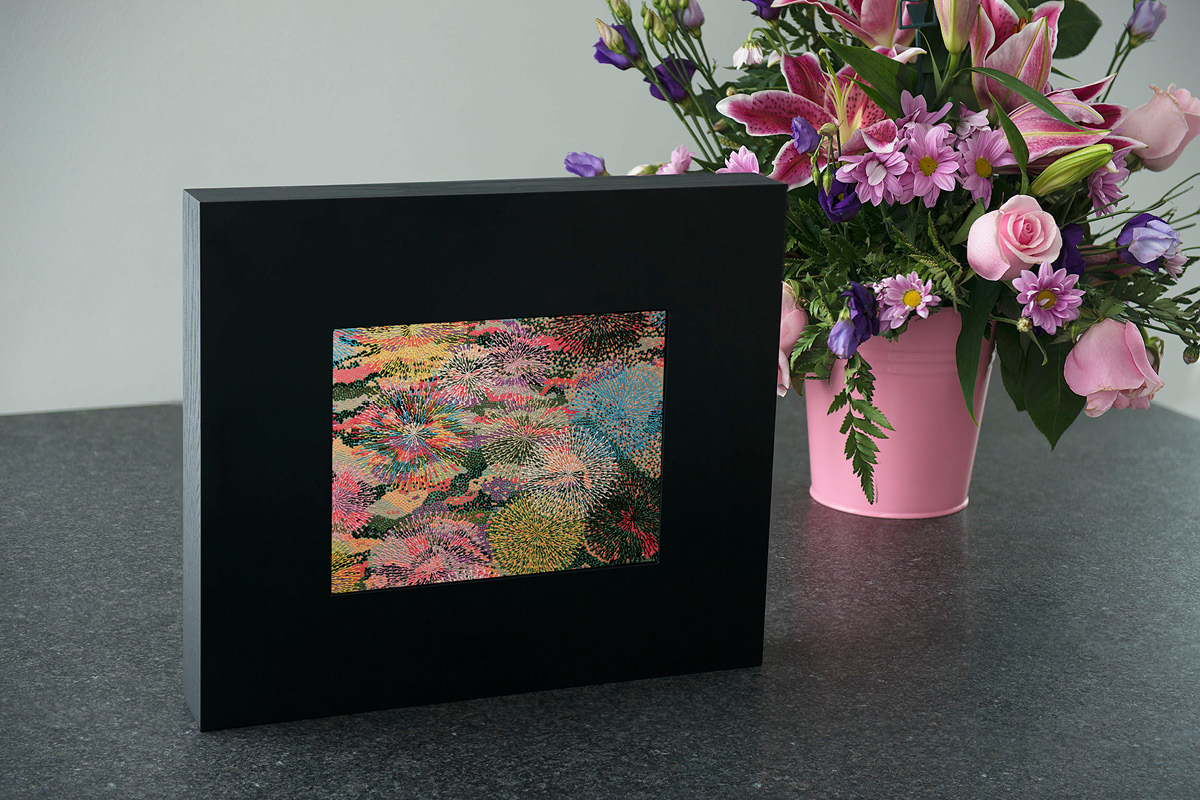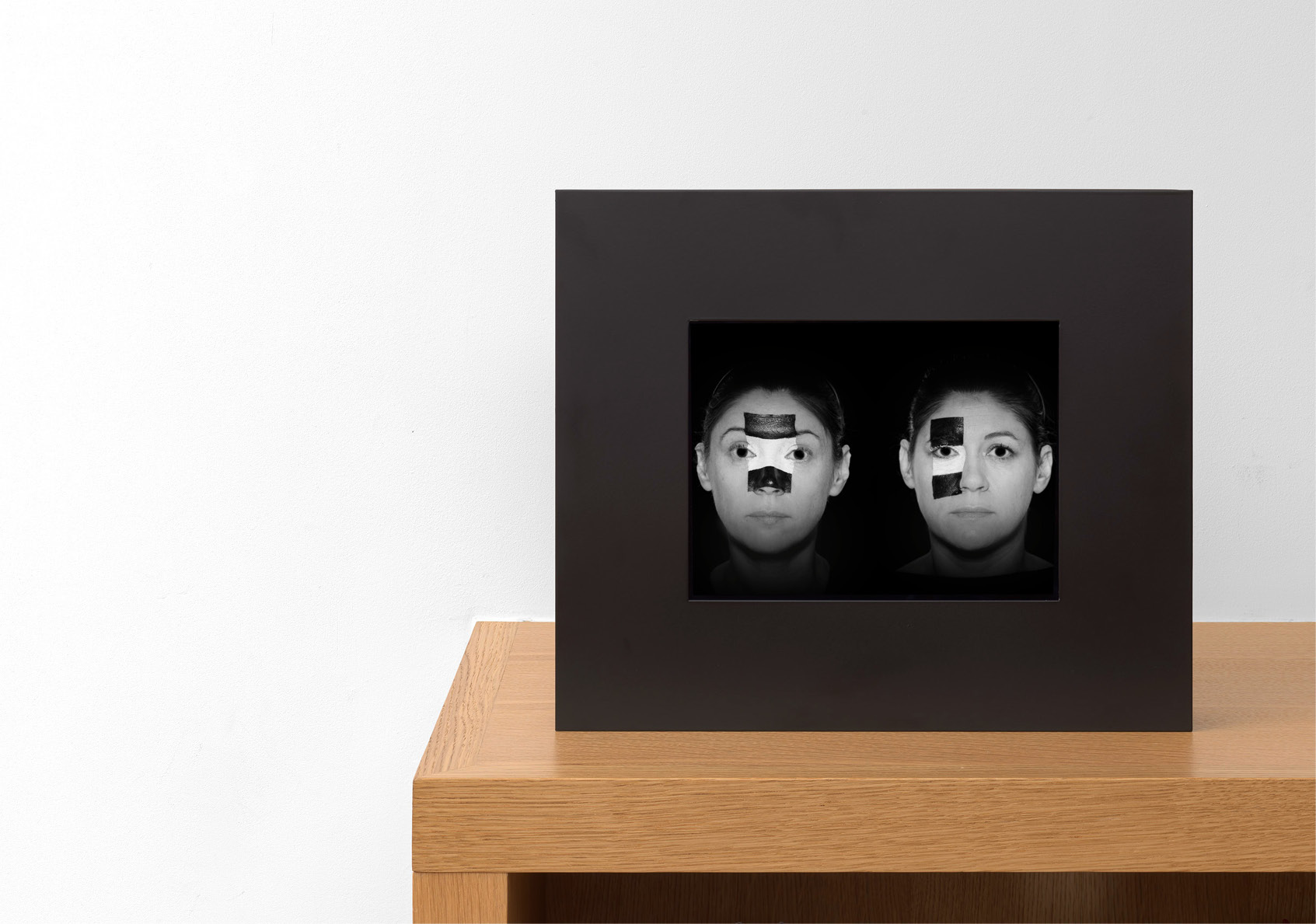New online galleries are offering artworks for the price of a Pret – but can they ever replace the thrill of the physical thing?
Words Aindrea Emelife
Last year brought about political reformations, unearthed a human psyche we blindly refused to believe still exists, and ended with announcements pinging on our smartphones suggesting that we are indeed stepping eerily closer into the dystopian future that George Orwell warned us about.
The January 1987 issue of OMNI magazine featured predictions from fourteen “great minds” about what they believe the future held. Bill Gates, the creator of Microsoft who probably needs no introduction, made the following prediction as he imagined the typical household of the future:
“You’re sitting at home. You have a variety of image libraries that will contain, say, all the world’s best art. You’ll also have very cheap, flat panel-display devices throughout your house that will provide resolution so good that viewing a projection will be like looking at an original oil painting. It will be that realistic.”

In saying this, Gates perhaps unknowingly prophesised the future of the digital art market, led by online platform Sedition as well as other projects such as Depict, Daata Editions and Electric Objects. Rory Blain, Director of Sedition, is a pioneer of the new accessibility of millennials to the digital art market; artworks on the platform can be bought for as low as £6 (see Digital Painting No.7 by Field, 1 Digital Edition of 500) comparable, only just, to a Pret A Manger lunch.
Owning things is an archaic concept that concerns the previous generation… the economy of this city is one where most young people rent everything, from their flats to their music to their cars.
So does ‘owning’ digital images play into the millennial preoccupation with image consumption, making ownership the next step… or is it just taking the mick?
As a millennial myself, I am inclined to say that ‘owning’ things is an archaic concept that concerns the previous generation. If we consider that London will be the primary location within the UK that these platforms will be targeting, the economy of this city is one where most young people rent everything from their flats to their music to their cars. Owning things also seems to rebut the liberalist idea of community and sharing that Gen Z has been weaned on.

Millennials have grown up with the internet and digital culture in a way that no previous generation has experienced, they expect to access and encounter significant sections of their lives and culture in the online sphere.
On the other hand, the push for art IRL (IRL = in real life, obvs) moves forward, as the 18-35 demographic begins to focus more on experiences, as detailed by the rise in interest in immersive theatre, interactive art and performance-based media. So perhaps the future may lie in the hiring of physical art instead? Websites such as Rise Art allow users to rent and rotate the art in their workplace or commercial spaces – art IRL but without the commitment.
Sure, it is entirely possible that some future virtual reality thingymajig can or will be developed to replicate scale, sound, feeling, detail, smell, ambience, remarks of cute old people in the National Gallery, the sound of museum docents shouting at school children not to get too close, the snap of tourists taking selfies with famous works… Or not. Nothing beats the experience of getting up close and personal with an art work – but I don’t think these platforms are claiming that they can. Digital art, even if mounted on the wall, albeit in a beautifully designed Sedition Frame™, still has nowhere near the emotional depth and sensory complexity of #artIRL.
But Rory Blain still believes that millennials and young collectors are crying out for a more accessible and affordable route into art. “Sedition removes many of the traditional barriers to starting out as an art collector – the intimidation of entering a gallery and the ‘expert’ world of art professionals, for example,” he explains. “And of course Sedition offers artworks from internationally recognised artists at a far more accessible price than traditional models. For example, we have works for sale by the likes of Mat Collishaw, Tracey Emin, Ron Arad and Yoko Ono for under £150.
“Millennials have grown up with the internet and digital culture in a way that no previous generation has experienced, they expect to access and encounter significant sections of their lives and culture in the online sphere, and the Sedition universe meets that expectation. Discovering, viewing, researching, buying, selling and sharing art has been made easier and more accessible than ever before. ”

The merits of encouraging the young and entry level collectors is essential if the next generation of the art market is to thrive – particularly with the introductions of more conceptual, non-physically tangible media. But surely mass production is not the answer? Being intimidated by exclusivity is one thing – having no exclusivity is quite another.
Daata Editions attempts to balance both realms by simplifying the whole affair. A curated platform of video, poetry, sound and web-based art, purchasable via digital download, it works with emerging and mid-career artists, meaning you won’t get those old-croney YBAs trying to fit in, instead promoting those who are at the fore of the movement.
Things become interesting with the emergence of platforms attempting to create a new market, rather than trying to compete with the Google Art Project system that simply promotes the viewing of art internationally via new media. But digital art still raises all kinds of tricky questions. What is the difference between viewing a neon Tracey Emin in high resolution on a screen, rather than on an iPad mounted on a wall within a digital art display? The idea of a curated art ‘playlist’ has its intentions in the right place, as it seeks to engage with an alienated demographic – but I would like to think that digital art made in that spirit would not be confined to a app-locked art ‘bank’, made into editions and sold via a £400 frame. That’s old thinking still applied to new art.
Will millennials buy into this? Perhaps. I see the platform as appealing to the hordes of young collectors rather, either as a complement to their physical art collection – portable, perfect for accessing your collection on the trot (or your yacht)– or as a way of getting into the art market at its most basic level and understanding how the markets works, but at minimum risk. At the moment, the website describes their demographic as: “35-55 year old university educated professionals or business owners who earn $100k+ per annum” but maintain that there is also a high engagement on the site from “young professionals who are first time or nascent collectors”.
We’re still a long way from a truly young and truly different art collecting movement, then. But as Gates would probably be the first to admit, every new product starts with chaos, and at least some interesting beta iterations are being thrown out there.
More from PHOENIX
Meet K Á R Y Y N, the LA-based musician with a love song for Aleppo
The musician opens up about Syria, spirituality and using anger in a positive way
Meet the Most Stylish Show-Goers from Day 4 of London Fashion Week AW17
From bloggers to Editors-in-Chief, we round up the best of the street style contingent
Meet the Most Stylish Show-Goers from Day 3 of London Fashion Week AW17
From bloggers to Editors-in-Chief, we round up the best of the street style contingent



